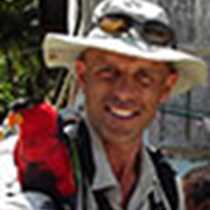South Orkney Islands
Overnight we traveled east through the Scotia Sea, dodging while admiring icebergs (one of which was 7 miles long and at least 5 miles wide), bergy bits and growlers. This afternoon, the Endeavour arrived in the remote archipelago of the South Orkney Islands, home to British and Argentine bases and a multitude of Antarctic wildlife.
We landed by Zodiac in Shingle Cove. The beaches were occupied by Antarctic fur seals and southern elephant seals. The Adelie penguin colony here was deserted. Being 200 miles further north than Paulet Island makes all the difference to a penguin, and the birds here have managed to complete their breeding cycle ahead of their more southerly congeners.
At first glance, Antarctica is a monochrome landscape of ice and rock. Ice white dominates: up to 98% of the continent is covered in permanent ice. The remaining 2% of continent is largely bare rock; grey or black, with occasional brown or reddish tints.
Today we saw some unfamiliar, brighter, colours (pictured). Bare rock was covered with splashes of orange and yellow - lichens encrusting rocks where they are nourished by a combination of salt spray and guano. In the crevices between rocks nestled small tufts of green Antarctic hairgrass growing in the nitrogen rich ornithogenic soils. This is one of two species of flowering plant found in Antarctica, neither of which is found below 68° South. When compared with the Arctic, where a diverse community of flowering plants may be found as far as 80° North, this reflects the harshness of the Antarctic environment and the specialist adaptations needed by any plant or animal that wants to make a living here.
Overnight we traveled east through the Scotia Sea, dodging while admiring icebergs (one of which was 7 miles long and at least 5 miles wide), bergy bits and growlers. This afternoon, the Endeavour arrived in the remote archipelago of the South Orkney Islands, home to British and Argentine bases and a multitude of Antarctic wildlife.
We landed by Zodiac in Shingle Cove. The beaches were occupied by Antarctic fur seals and southern elephant seals. The Adelie penguin colony here was deserted. Being 200 miles further north than Paulet Island makes all the difference to a penguin, and the birds here have managed to complete their breeding cycle ahead of their more southerly congeners.
At first glance, Antarctica is a monochrome landscape of ice and rock. Ice white dominates: up to 98% of the continent is covered in permanent ice. The remaining 2% of continent is largely bare rock; grey or black, with occasional brown or reddish tints.
Today we saw some unfamiliar, brighter, colours (pictured). Bare rock was covered with splashes of orange and yellow - lichens encrusting rocks where they are nourished by a combination of salt spray and guano. In the crevices between rocks nestled small tufts of green Antarctic hairgrass growing in the nitrogen rich ornithogenic soils. This is one of two species of flowering plant found in Antarctica, neither of which is found below 68° South. When compared with the Arctic, where a diverse community of flowering plants may be found as far as 80° North, this reflects the harshness of the Antarctic environment and the specialist adaptations needed by any plant or animal that wants to make a living here.



